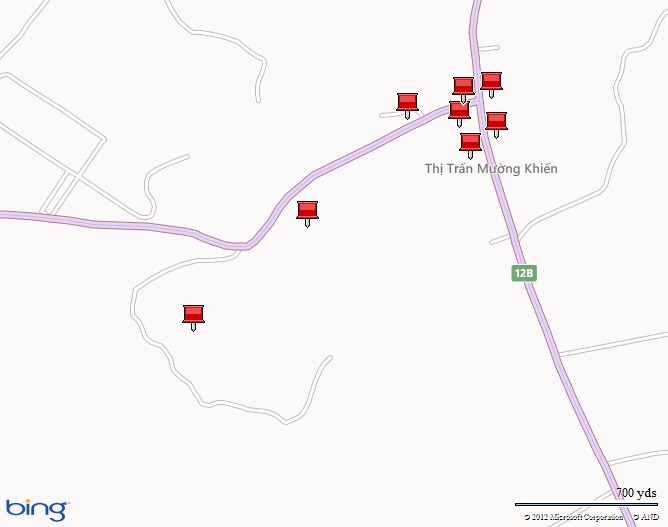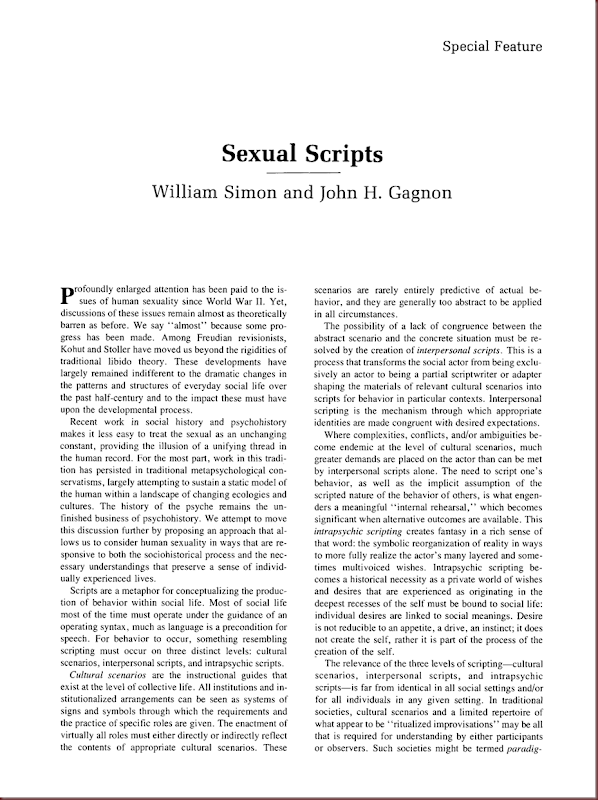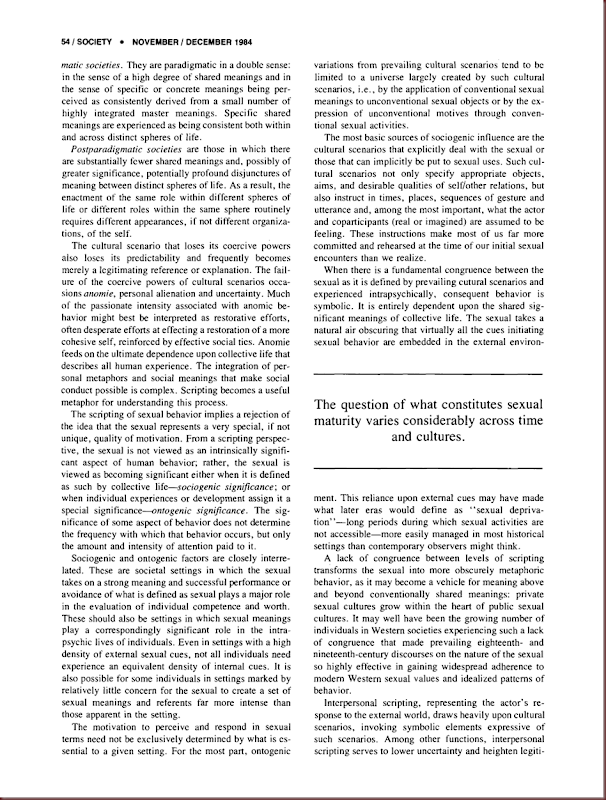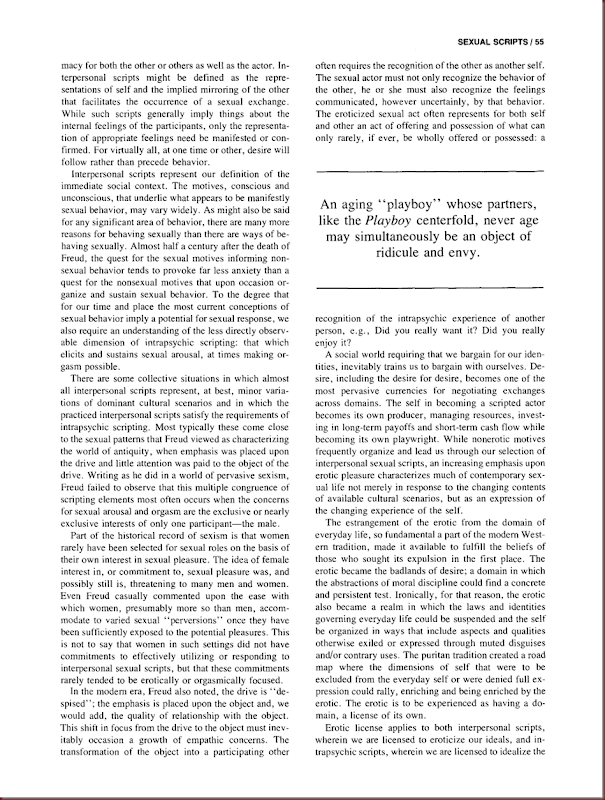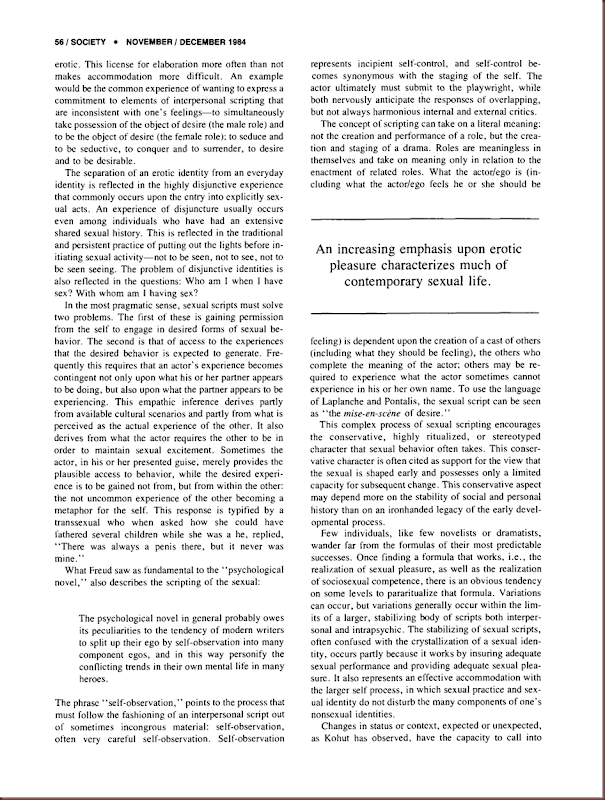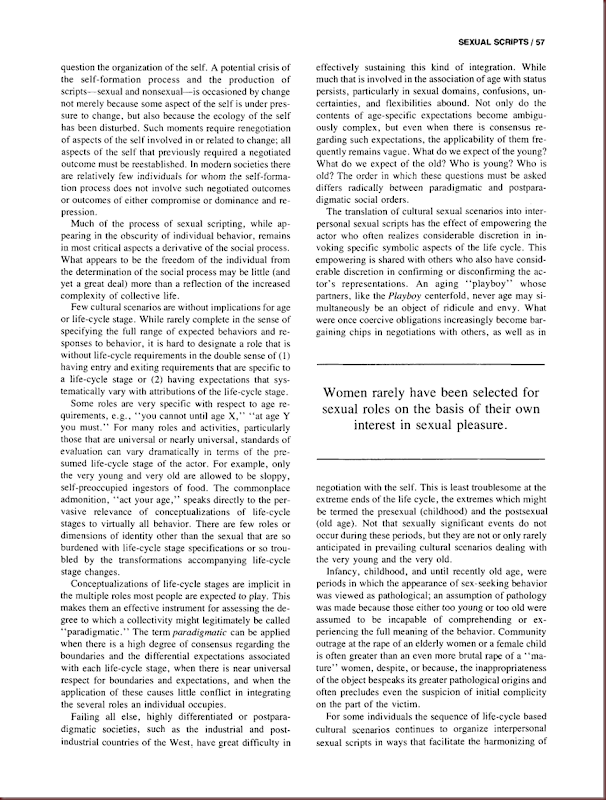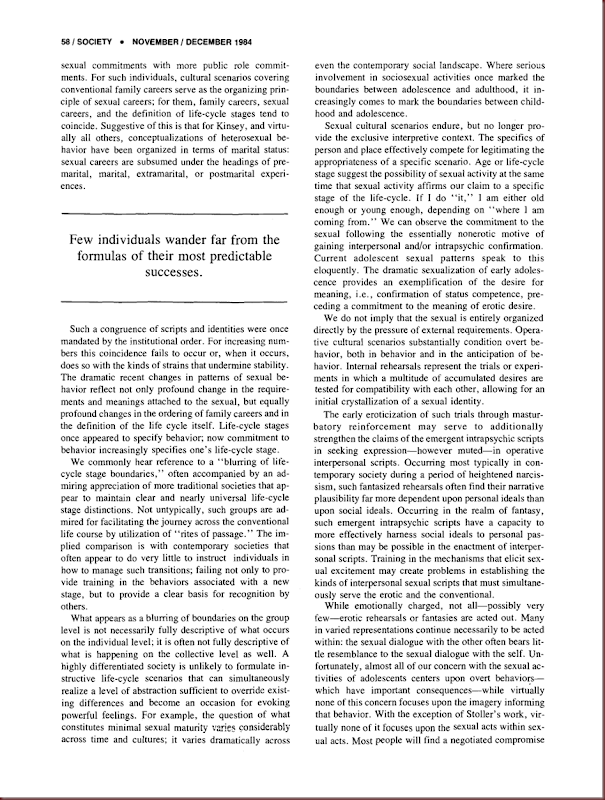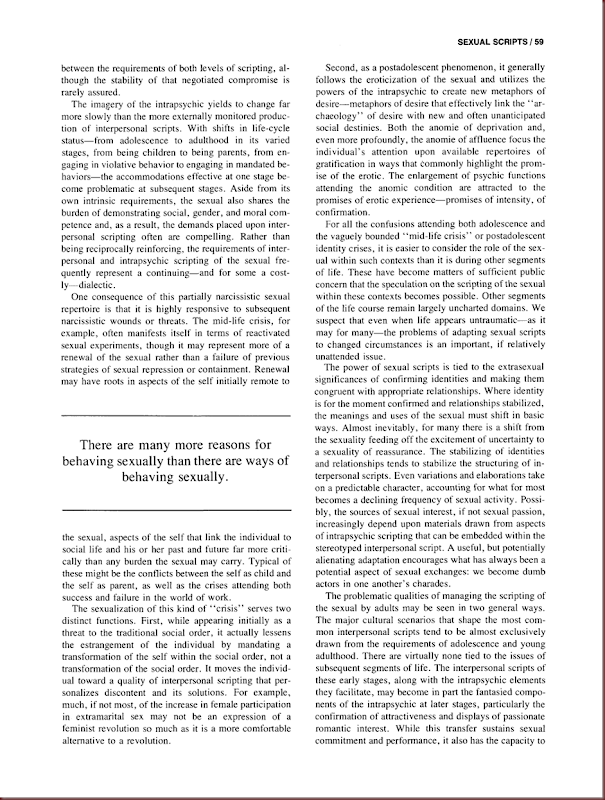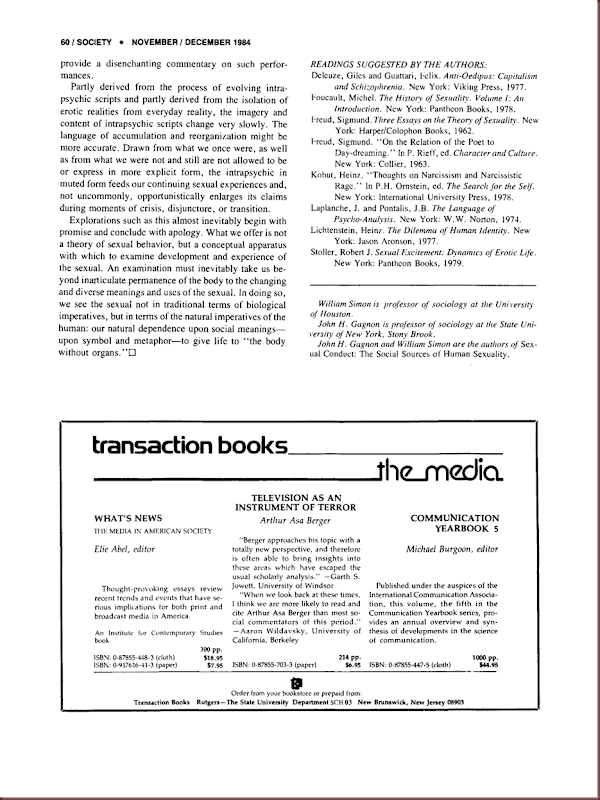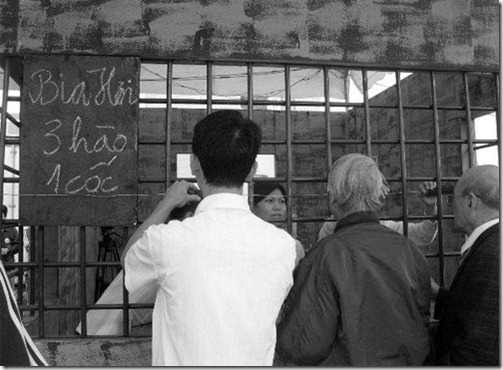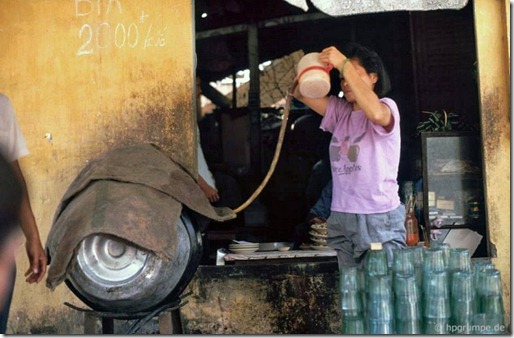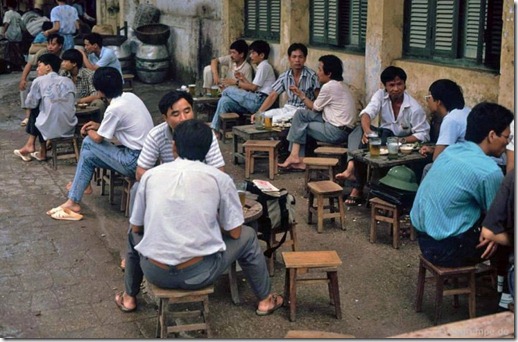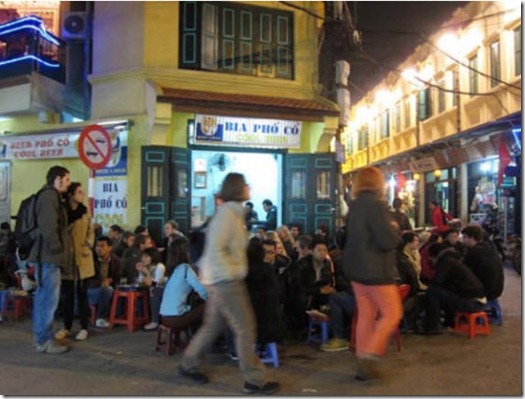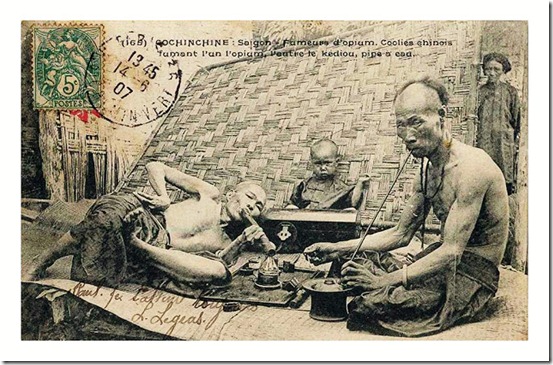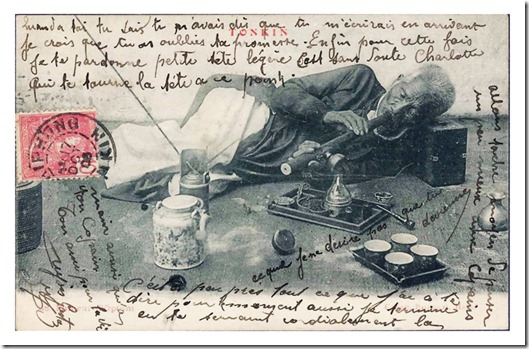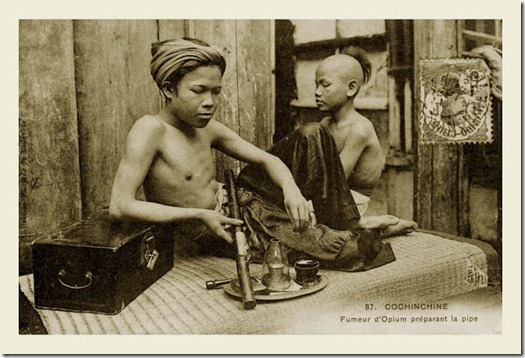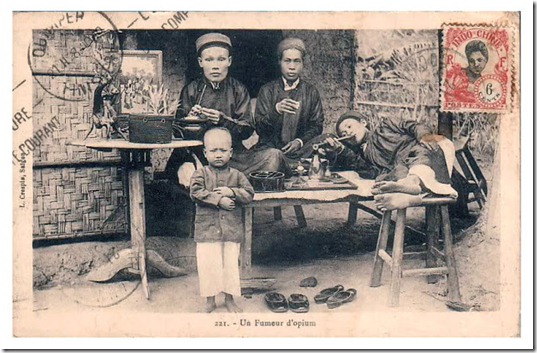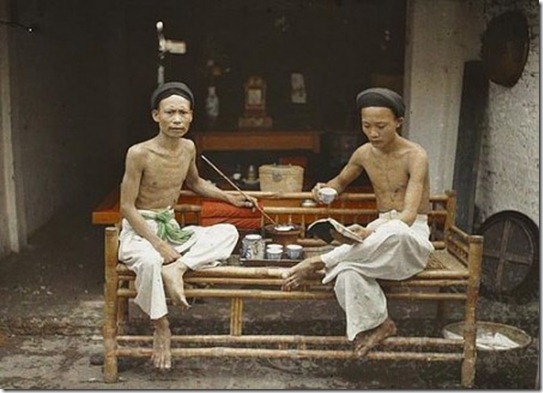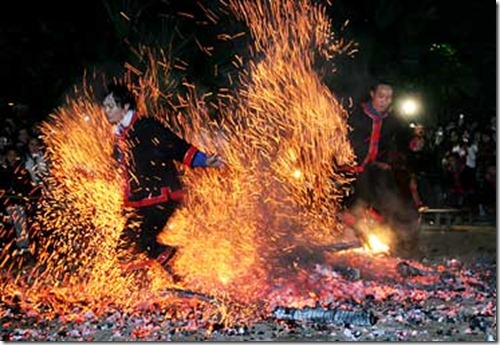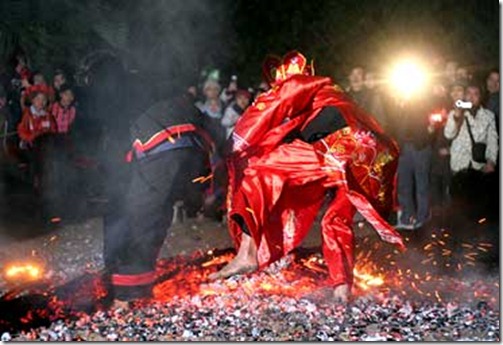-
Come prepared
-
Listen: understand the questions and address them directly
-
Make eye contact
-
Show enthusiasm for your work (let your voice, face, body movements do their jobs)
-
See you work in the bigger picture (Therefore, my work is an example /manifestation/ reflection of a more general phenomenon/body of literature on…)
-
Be able to refer directly to your text in answering questions (I chapter 4, section 2, I have already said that….)
-
Be able to refer directly to seminal texts by author and with accuracy
-
Be able to articulate the nature and scale of your contribution
-
Think forward – beyond the research to further work and its implications
-
Be reflective – be able to say what was good about your work and what could be improved and how?

Total Pageviews
Wednesday
Don’t fail your viva!
What shouldn’t you do in a viva?
-
Assume that the viva does not matter
-
Answer a question with ‘my supervisor made me do it’
-
Stick to one word answers
-
Display intransigence
-
Display rampant cynicism
-
Be flippant
-
Display a lack of interest
-
Show an inability to describe your own work
-
Show an inability to define fundamental terms
-
Show an inability to talk about the papers that you cite
What would you do in a viva (UK system)?
-
Showing respect for the academic system and the discipline
-
Showing general mastery of the domain and its intellectual tools
-
Demonstrating intellectual independence
-
Joining the academic discourse
-
Undergoing a rite of passage
Possible outcomes of a viva: all doctoral candidates in UK should know
1- Outright pass. Very Rare.
2- Pass with minor corrections: Candidate needs to make tiny changes after few days. Examiners are not involved in checking. Rare.
3- Pass with minor editorial revisions. The most likely outcome. The student has to change/correct the thesis within two month. The internal examiner must check them and confirm in writing if they have been made. Likely to happen.
4- Pass with major editorial revisions: Corrections (provided by the examiners) must be made within 4 months. Internal examiner must check them and confirm in writing that they have been made. Likely to happen.
5- Referral (examiners specify a period up to 12 months). The student may resubmit a revised thesis (once only) – both examiners must re-read and make a decision. Quite a few.
6-Award of an Mphil or referral for an Mphil. Very rare.
7-Outright fail. Very rare.
How to survive your viva?
Step 1. Identify generic questions
- IN A FEW SENTENCES, WHAT IS YOUR THESIS? CAN YOU SUMMERISE IT IN A FEW SENTENCES?
- WHY DID YOU CHOOSE THIS TOPIC FOR YOUR DOCTORAL RESEARCH?
- WHAT WAS THE GAP IN KNOWLEDGE THAT YOU WERE SEEKING TO FILL?
- HOW IMPORTANT ARE YOUR FINDINGS, AND TO WHOM?
- HOW WOULD YOU CRITIQUE YOUR RESEARCH?
- WOULD YOU (WITH THE BENEFIT OF HINDSIGHT) DO ANYTHING DIFFERENTLY?
- WHAT HAVE YOU LEARNT FROM THE PROCESS OF DOING YOUR PHD?
- HOW ARE YOU GOING TO USE YOUR RESEARCH FINDINGS? (what is your next step?)
Step 2. Identify specific questions.
Step 3. Practice answering verbally.
- Using clear voice
- Speed: 150 words per minute, according to international standard
- Eye contact
- Sitting straight, a bit forward
- Not offensive to take and answer questions. See this as an unique opportunity to discuss your work with somebody
- See the viva as a positive thing
Monday
Odd and Odds ratio?
p1 (p of y at mean of x) : 0.2
p2 (p of y at mean of x +1 sd): (0.4
What is odds ratio?
odd1: (0.2)/(1-0.2)=0.2/0.8=1/4=.25
odd2: (0.4)/(1-0.4)=0.4/0.6=2/3=.33
odds ration: odd2/odd1: 0.33/0.25=1.32
Sunday
Factor analysis in Stata: PCF vs PF
- Variance is considered 1 for each item.
- Total variance is equal to number of items
- Concerns with shared variance (R2 of each item regressed on the rest), not the total variance
- Total shared variance is always smaller than number of items
Thursday
Drinking in socialist and post-socialist countries
Chenet, L., Leon, D., McKee, M., & Vassin, S. (1998). Deaths from Alcohol and Violence in Moscow: Socio-Economic Determinants. European Journal of Population / Revue Européenne de Démographie, 14(1), 19-37.
Connor, W. D. (1971). Alcohol and Soviet Society. Slavic Review, 30(3), 570-588.
Hann, C. (2004). Wine, sand and socialism: some enduring effects of Hungary's 'flexible' model of collectivization. In M. Petrick & P. Weingarten (Eds.), The role of agriculture in central and eastern European rural development: engine of change or social buffer? (Vol. 25, pp. 192-208). Halle: IAMO.
Herrold, M. (2001). Which Truth? Cultural Politics and Vodka in Rural Russia. Geographical Review, 91(1/2), 295-303.
James, S. R. (1985). Alcohol, public policy and the left: the socialist debate in the early twentieth century Europe. Contemporary Drug Problems, 3(Summer), 309-330.
Koester, D. (2003). Drink, Drank, Drunk: A Social-Political Grammar of Russian Drinking Practices in a Colonial Context. The Anthropology of East Europe Review, 21(2).
Kononenko, N. (2004). Karaoke Ivan Kupalo: Ritual in Post-Soviet Ukraine. The Slavic and East European Journal, 48(2), 177-202.
Kristenson, M., Kucinskienë, Z., Bergdahl, B., Calkauskas, H., Urmonas, V., & Orth-Gomér, K. (1998). Increased psychosocial strain in Lithuanian versus Swedish men: the LiVicordia study. Psychosomatic Medicine, 60(3), 277-282.
Lampland, M. (1991). Pigs, Party Secretaries, and Private Lives in Hungary. American Ethnologist, 18(3), 459-479.
Leon, D., & Shkolnikov, V. (1998). Social stress and the Russian mortality crisis. JAMA, 279(10), 790-791.
Mains, D. (2004). Drinking, Rumour, and Ethnicity in Jimma, Ethiopia. Africa: Journal of the International African Institute, 74(3), 341-360.
Manning, P., & Uplisashvili, A. (2007). "Our Beer": Ethnographic Brands in Postsocialist Georgia. American Anthropologist, 109(4), 626-641.
Moskalewicz, J. (2000). Alcohol in the countries in transition: the Polish experience and the wider context. Contemporary Drug Problems, 3(Fall), 561-592.
Mueggler, E. (1998). The Poetics of Grief and the Price of Hemp in Southwest China. The Journal of Asian Studies, 57(4), 979-1008.
Palosuo, H. (2000). Health-related lifestyles and alienation in Moscow and Helsinki. Social Science & Medicine, 51(9), 1325-1341. doi: 10.1016/s0277-9536(00)00095-2
Phillips, L. L. (1997). Message in a Bottle: Working-Class Culture and the Struggle for Revolutionary Legitimacy, 1900-1929. Russian Review, 56(1), 25-43.
Pietilä, I., & Rytkönen, M. (2008). Coping with stress and by stress: Russian men and women talking about transition, stress and health. Social Science & Medicine, 66(2), 327-338. doi: 10.1016/j.socscimed.2007.09.002
Pridemore, W. A. (2006). Heavy Drinking and Suicide in Russia. Social Forces, 85(1), 413-430.
Room, R. (1993). Evolution of alcohol monopolies and their relevance for public health. Contemporary Drug Problems, 2(Summer), 169-188.
Sidorov, P. (1995). Russia. In D. B. Heath (Ed.), International handbook on alcohol and culture (pp. 237-253). Connecticut: Greenwood Press.
Walberg, P., McKee, M., Shkolnikov, V., Chenet, L., & Leon, D. A. (1998). Economic change, crime, and mortality crisis in Russia: regional analysis. BMJ, 317(7154), 312-318.
Wasserman, D., Värnik, A., & Eklund, G. (1998). Female suicides and alcohol consumption during perestroika in the former USSR. Acta Psychiatrica Scandinavica, 98, 26-33. doi: 10.1111/j.1600-0447.1998.tb10762.x
Waters, E., & Thom, B. (2007). Alcohol, Policy and Politics in Kazakhstan. Europe-Asia Studies, 59(6), 999-1023.
Yurchak, A. (2003). Soviet Hegemony of Form: Everything Was Forever, until It Was No More. Comparative Studies in Society and History, 45(3), 480-510.
Acculturation stress and substance use and abuse
Adrian, M. (2002). A critical perspective on cross-cultural contexts for addiction and multiculturalism: their meanings and implications in the substance use field. Substance Use & Misuse, 37(8-10), 853-900.
Anderson, L. P. (1991). Acculturative stress: A theory of relevance to black Americans. Clinical Psychology Review, 11(6), 685-702.
Ayers, J. W., Chambers, C. D., Hofstetter, C. R., Hughes, S. C., Reyes, W. D., Kang, S. W., et al. (2011). Cultural and social network predictors of drinking among Korean American women. Alcohol, 45(1), 89-97.
Bakhireva, L. N., Young, B. N., Dalen, J., Phelan, S. T., & Rayburn, W. F. (2009). Periconceptional binge drinking and acculturation among pregnant Latinas in New Mexico. Alcohol, 43(6), 475-481. doi: 10.1016/j.alcohol.2009.08.002
Berry, J. (2004). Acculturation. In S. Charles (Ed.), Encyclopedia of Applied Psychology (pp. 27-34). New York: Elsevier.
Berry, J. (2006). Contexts of acculturation. In D. Sam & J. Berry (Eds.), The Cambride handbook of acculturation psychology (pp. 27-42). Cambride: Cambride University Press.
Berry, J. W. (2005). Acculturation: Living successfully in two cultures. International Journal of Intercultural Relations, 29(6), 697-712.
Berry, J. W., & Ataca, B. (2007). Cultural Factors in Stress. In M. Bruce, E. R. d. Kloet, R. Robert, C. George, S. Andrew, R. Noel & C. Ian (Eds.), Encyclopedia of Stress (Second Edition) (pp. 672-678). New York: Academic Press.
Caetano, R., Clack, C., & Tam, T. (1998). Alcohol consumption among racial/ethnic minorities: theory and research. Alcohol Health & Research World, 22(4), 233-242.
Dawson, D. A. (1998). Beyond Black, White and Hispanic: Race, Ethnic Origin and Drinking Patterns in the United States. Journal of Substance Abuse, 10(4), 321-339. doi: 10.1016/s0899-3289(99)00009-7
Eitle, T. M., Wahl, A.-M. G., & Aranda, E. (2009). Immigrant generation, selective acculturation, and alcohol use among Latina/o adolescents. Social Science Research, 38(3), 732-742.
Gordon, M. (1964). Assimilation in American life: the role of race, religion and national origins. New York: Oxford University Press.
Gutmann, M. C. (1999). Ethnicity, alcohol, and acculturation. Social Science & Medicine, 48(2), 173-184.
Haasen, C., Sinaa, M., & Reimer, J. (2008). Alcohol use disorders among Afghan migrants in Germany. Subst Abus, 29(3), 65-70.
Hanna, J. M., & Fitzgerald, M. H. (1993). Acculturation and symptoms: A comparative study of reported health symptoms in three Samoan communities. Social Science and Medicine, 36(9), 1169-1180. doi: 10.1016/0277-9536(93)90237-x
Hasin, D., Rahav, G., Meydan, J., & Neumark, Y. (1998). The Drinking of Earlier and More Recent Russian Immigrants to Israel: Comparison to Other Israelis. Journal of Substance Abuse, 10(4), 341-353. doi: 10.1016/s0899-3289(99)00010-3
Hendershot, C. S., Dliworth, T. M., Neighbors, C., & George, W. H. (2008). Differential effects of acculturation on drinking behavior in Chinese- and Korean-American college students. Journal of Studies on Alcohol and Drugs, 69(1), 121-128.
Kirmayer, L. J. (1994). Suicide Among Canadian Aboriginal Peoples. Transcultural Psychiatry, 31(1), 3-58. doi: 10.1177/136346159403100101
Landrine, H., & Klonoff, E. A. (2004). Culture change and ethnic-minority health behavior: An operant theory of acculturation. Journal of Behavioral Medicine, 27(6), 527-555.
Lee, J.-S., Koeske, G. F., & Sales, E. (2004). Social support buffering of acculturative stress: a study of mental health symptoms among Korean international students. International Journal of Intercultural Relations, 28(5), 399-414.
Makimoto, K. (1998). Drinking patterns and drinking problems among Asian-Americans and Pacific Islanders. Alcohol Health & Research World, 22(4), 270-275.
Mino, I., Profit, W. E., & Pierce, C. M. (2007). Minorities and Stress. In M. Editor-in-Chief: George FinkAssociate Editors:Bruce, E. R. d. Kloet, R. Robert, C. George, S. Andrew, R. Noel, C. Ian & E. R. d. K. R. R. G. C. A. S. N. R. I. C. G. F. Giora FeuersteinA2 - Editor-in-Chief: George FinkAssociate Editors:Bruce McEwen (Eds.), Encyclopedia of Stress (Second Edition) (pp. 748-753). New York: Academic Press.
Neff, J. A., & Hoppe, S. K. (1992). Acculturation and drinking patterns among U.S. Anglos, Blacks, and Mexican Americans. Alcohol and Alcoholism, 27(3), 293-308.
O'Hare, T., & Van Tran, T. (1998). Substance abuse among Southeast Asians in the US: Implications for practice and research. Social Work in Health Care, 26(3), 69-80.
Perez, D. M., Jennings, W. G., & Gover, A. R. (2008). Specifying general strain theory: An ethnically relevant approach. Deviant Behavior, 29(6), 544-578. doi: 10.1080/01639620701839385
Polednak, A. P. (1997). Gender and acculturation in relation to alcohol use among Hispanic (Latino) adults in two areas of the northeastern United States. Substance Use & Misuse, 32(11), 1513-1524.
Quintero, G. (2002). Nostalgia and Degeneration: The Moral Economy of Drinking in Navajo Society. Medical Anthropology Quarterly, 16(1), 3-21.
Raffaelli, M., Torres Stone, R. A., Iturbide, M. I., McGinley, M., Carlo, G., & Crockett, L. J. (2007a). Acculturation, gender, and alcohol use among Mexican American college students. Addictive Behaviors, 32(10), 2187-2199. doi: 10.1016/j.addbeh.2007.02.014
Raffaelli, M., Torres Stone, R. A., Iturbide, M. I., McGinley, M., Carlo, G., & Crockett, L. J. (2007b). Aculturation, gender, and alcohol use among Mexican American college students. Addictive Behaviors, 32(10), 2187-2199.
Redfield, R., Linton, R., J., M., & Herskovits, M. J. (1936). Memorandum for the study of acculturation. American Anthropologist, 38(1), 149-152.
Sakai, J. T., Ho, P. M., Shore, J. H., Risk, N. K., & Price, R. K. (2005). Asians in the United States: substance dependence and use of substance-dependence treatment. Journal of Substance Abuse Treatment, 29(2), 75-84. doi: 10.1016/j.jsat.2005.04.002
Sam, D. (2006). Acculturation: conceptual background and core components. In D. Sam & J. Berry (Eds.), The Cambride handbook of acculturation psychology (pp. 11-26). Cambride: Cambride University Press.
Schwartz, S. J., Unger, J. B., Rosiers, S. E. D., Huang, S., Baezconde-Garbanati, L., Lorenzo-Blanco, E. I., et al. (2012). Substance use and sexual behavior among recent Hispanic immigrant adolescents: Effects of parent–adolescent differential acculturation and communication. Drug and Alcohol Dependence, 125, Supplement 1(0), S26-S34. doi: 10.1016/j.drugalcdep.2012.05.020
Sharkey, J. D., Sander, J. B., & Jimerson, S. R. (2010). Acculturation and mental health: Response to a culturally-centered delinquency intervention. Journal of Criminal Justice, 38(4), 827-834. doi: 10.1016/j.jcrimjus.2010.05.011
Song, Y. J., Hofstetter, C. R., Hovell, M. F., Paik, H. Y., Park, H. R., Lee, J., et al. (2004). Acculturation and health risk behaviors among Californians of Korean descent. Preventive Medicine, 39(1), 147-156. doi: 10.1016/j.ypmed.2004.01.013
Strunin, L., Edwards, E. M., Godette, D. C., & Heeren, T. (2007). Country of origin, age of drinking onset, and drinking patterns among Mexican American young adults. Drug and Alcohol Dependence, 91(2–3), 134-140. doi: 10.1016/j.drugalcdep.2007.05.013
Teske, R., & Nelson, B. (1974). Acculturation and Assimilation: A Clarification. American Ethnologist, 1(2), 351-367.
Tonin, S. L., Burrow-Sanchez, J. J., Harrison, R. S., & Kircher, J. C. (2008). The influence of attitudes, acculturation, and gender on substance use for Mexican American middle school students. Addictive Behaviors, 33(7), 949-954. doi: 10.1016/j.addbeh.2008.02.014
Vaeth, P. A. C., Caetano, R., & Rodriguez, L. A. (2012). The Hispanic Americans Baseline Alcohol Survey (HABLAS): The association between acculturation, birthplace and alcohol consumption across Hispanic national groups. Addictive Behaviors, 37(9), 1029-1037. doi: 10.1016/j.addbeh.2012.04.015
Warner, T. D., Fishbein, D. H., & Krebs, C. P. (2010). The risk of assimilating? Alcohol use among immigrant and U.S.-born Mexican youth. Social Science Research, 39(1), 176-186. doi: 10.1016/j.ssresearch.2009.07.001
Williams, J., Allen, J., & Ortega, S. (1990). Dimensions of ethnic assimilation: an empirical appraisal of Gordon's typology. Social Science Quarterly, 71(4), 697-710.
Wong, S. K. (1999). Acculturation, peer relations, and delinquent behavior of Chinese-Canadian youth. Adolescence, 34(133), 107-119.
Zamboanga, B. L., Raffaelli, M., & Horton, N. J. (2006). Acculturation status and heavy alcohol use among Mexican American college students: Investigating the moderating role of gender. Addictive Behaviors, 31(12), 2188-2198. doi: 10.1016/j.addbeh.2006.02.018
Zemore, S. E., Mulia, N., Yu, Y., Borges, G., & Greenfield, T. K. (2009). Gender, acculturation, and other barriers to alcohol treatment utilization among Latinos in three National Alcohol Surveys. Journal of Substance Abuse Treatment, 36(4), 446-456.
Techniques of neutralization, vocabulary of motives, techniques of information control
Agnew, R. (1994). The techniques of neutralization and violence. Criminology, 32(4), 555-580.
Akers, R. L., Krohn, M. D., Lanza-Kaduce, L., & Radosevich, M. (1979). Social Learning and Deviant Behavior: A Specific Test of a General Theory. American Sociological Review, 44(4), 636-655.
Auyero, J., & Swistun, D. (2008). The Social Production of Toxic Uncertainty. American Sociological Review, 73(3), 357-379.
Bacharach, S. B., Bamberger, P. A., & Sonnenstuhl, W. J. (2002). Driven to Drink: Managerial Control, Work-Related Risk Factors, and Employee Problem Drinking. The Academy of Management Journal, 45(4), 637-658.
Ball, R. A. (1966). An Empirical Exploration of Neutralization Theory. Criminology, 4, 22.
Ball, R. A. (1983). Development of Basic Norm Violation - Neutralization and Self-Concept within a Male Cohort. Criminology, 21, 75.
Ball, R. A. L., J. Robert. (1976). Female Delinquency in a Rurban County Research Note. Criminology, 14, 279.
Brennan, W. C. (1974). Abortion and the Techniques of Neutralization. Journal Of Health And Social Behavior, 15(4), 358-365.
Britt, D. W., & Campbell, E. Q. (1977). Assessing the Linkage of Norms, Environments, and Deviance. Social Forces, 56(2), 532-550.
Buchanan, D. (2006). Moral reasoning as a model for health promotion. Social Science & Medicine, 63(10), 2715-2726. doi: 10.1016/j.socscimed.2006.07.002
Charles, M. (1968). Drinking and deviance disavowal: the case of child molesters. Social Problems, 16(1), 43-49.
Christensen, T. (2010). Presumed Guilty: Constructing Deviance and Deviants through Techniques of Neutralization. Deviant Behavior, 31(6), 552 - 577.
Copelton, D. A. (2007). “You are What You Eat”: Nutritional Norms, Maternal Deviance, and Neutralization of Women's Prenatal Diets. Deviant Behavior, 28(5), 467 - 494.
Copes, H. (2003). Societal attachments, offending frequency, and techniques of neutralization. Deviant Behavior, 24(2), 101 - 127.
Costello, B. J. (2000). Techniques of neutralization and self-esteem: a critical test of social control and neutralization theory. Deviant Behavior, 21(4), 307 - 329.
Cromwell, P., & Thurman, Q. (2003). The devil made me do it: use of neutralizations by shoplifters. Deviant Behavior, 24(6), 535 - 550.
DiBalasio, F. (1988). Predriving riders and drinking drivers. Journal of Studies on Alcohol, 49(1), 11-15.
Dodder, R. A., & Hughes, S. P. (1993). Neutralization of drinking behavior. Deviant Behavior, 14(1), 65-79. doi: 10.1080/01639625.1993.9967928
Durkin, K. F., Wolfe, T. W., & Clark, G. A. (2005). College students and binge drinking: an evaluation of social learning theory. Sociological Spectrum, 25(3), 255-272. doi: 10.1080/027321790518681
Emslie, C., Hunt, K., & Lyons, A. (2012). Older and wiser, Men's and women's accounts of drinking in early mid-life. Sociology of Health & Illness, 34(4), 481-496.
Fritsche, I. (2005). Predicting Deviant Behavior by Neutralization: Myths and Findings. Deviant Behavior, 26(5), 483 - 510.
Froggio, G., Zamaro, N., & Lori, M. (2009). Exploring the Relationship between Strain and Some Neutralization Techniques. European Journal of Criminology, 6(1), 73-88. doi: 10.1177/1477370808098106
Gailey, J. A., & Prohaska, A. (2006). “Knocking off a Fat Girl:” an Exploration of Hogging, Male Sexuality, and Neutralizations. Deviant Behavior, 27(1), 31 - 49.
Galasin'ska, A., & Galasin'ski, D. (2003). Discursive strategies for coping with sensitive topics of the Other. Journal of Ethnic and Migration Studies, 29(5), 849-863. doi: 10.1080/1369183032000149604
Gibbs, J. P., & Erickson, M. L. (1975). Major Developments in the Sociological Study of Deviance. Annual Review of Sociology, 1, 21-42.
Giles, D. (1999). Retrospective Accounts of Drunken Behaviour: Implications for Theories of Self, Memory and the Discursive Construction of Identity. Discourse Studies, 1(4), 387-403. doi: 10.1177/1461445699001004001
Gough, B., & Edwards, G. (1998). The beer talking: four lads, a carry out and the reproduction of masculinities. The sociological review, 46(3), 409-455.
Green, G., South, N., & Smith, R. (2006). “They Say That You Are a Danger But You Are Not”: Representations and Construction of the Moral Self in Narratives of “Dangerous Individuals”. Deviant Behavior, 27(3), 299 - 328.
Guise, J. M. F., & Gill, J. S. (2007). ‘Binge drinking? It's good, it's harmless fun’: a discourse analysis of accounts of female undergraduate drinking in Scotland. Health Education Research, 22(6), 895-906. doi: 10.1093/her/cym034
Hamlin, J. E. (1988). Misplaced Role of Rational Choice in Neutralization Theory, The. Criminology, 26, 425.
Hewitt, J. P., & Stokes, R. (1975). Disclaimers. American Sociological Review, 40(1), 1-11.
Järvinen, M. (2001). Accounting for Trouble: Identity Negotiations in Qualitative Interviews with Alcoholics. Symbolic Interaction, 24(3), 263-284.
Kewell, B. (2007). Linking Risk and Reputation: A Research Agenda and Methodological Analysis. Risk Management, 9(4), 238-254.
Koester, D. (2003). Drink, Drank, Drunk: A Social-Political Grammar of Russian Drinking Practices in a Colonial Context. The Anthropology of East Europe Review, 21(2).
Mannle, H. W. L., Peter W. (1979). Control Theory Reexamined: Race and the Use of Neutralizations among Institutionalized Delinquents. Criminology, 17, 58.
Maruna, S., & Copes, H. (2005). What have we learned from five decades of neutralization research? Crime and Justice, 32, 221-320.
Minor, W. W. (1980). Neutralization of Criminal Offense. Criminology, 18, 103.
Minor, W. W. (1984). Neutralization as a Hardening Process: Considerations in the Modeling of Change. Social Forces, 62(4), 995-1019.
Mullaney, J. L. (2007). Telling It Like a Man: Masculinities and Battering Men's Accounts of Their Violence. Men and Masculinities. doi: 10.1177/1097184x06287758
Nairn, K., Higgins, J., Thompson, B., Anderson, M., & Fu, N. (2006). ‘It's Just Like the Teenage Stereotype, You Go Out and Drink and Stuff’: Hearing from Young People who Don't Drink. Journal of Youth Studies, 9(3), 287-304. doi: 10.1080/13676260600805655
Peretti-Watel, P. (2003). Neutralization theory and the denial of risk: some evidence from cannabis use among French adolescents*. The British Journal of Sociology, 54(1), 21-42.
Piacentini, M. G., Chatzidakis, A., & Banister, E. N. (2012). Making sense of drinking: the role of techniques of neutralisation and counter-neutralisation in negotiating alcohol consumption. Sociology of Health & Illness, 34(6), 841-857. doi: 10.1111/j.1467-9566.2011.01432.x
Priest, T. B. M., John H. III. (1970). Techniques of Neutralization: Young Adult Marijuana Smokers Research Note. Criminology, 8, 185.
Room, R. (1984). Alcohol Control and Public Health (Vol. 5, pp. 293-317).
Rosenberg, M. (1988). Self-objectification: Relevance for the species and society. Sociological Forum, 3(4), 548-565. doi: 10.1007/bf01115414
Scott, M., & Lyman, S. (1968). Accounts. American Sociological Review, 33(1), 46-62.
Shields, I., & Whitehall, G. (1994). Neutralization and Delinquency among Teenagers. Criminal Justice and Behavior, 21(2), 223-235. doi: 10.1177/0093854894021002003
Sjöberg, L. (1998). Risk Perception of Alcohol Consumption. Alcoholism: Clinical and Experimental Research, 22, 277s-284s. doi: 10.1111/j.1530-0277.1998.tb04380.x
Sjöberg, L. (2003). The Different Dynamics of Personal and General Risk. Risk Management, 5(3), 19-34.
Sykes, G. M., & Matza, D. (1957). Techniques of Neutralization: A Theory of Delinquency. American Sociological Review, 22(6), 664-670.
Tierney, K. J. (1999). Toward a Critical Sociology of Risk. Sociological Forum, 14(2), 215-242.
Tombor, I., UrbÁN, R., Berkes, T., & Demetrovics, Z. (2010). Denial of smoking-related risk among pregnant smokers. Acta Obstetricia et Gynecologica Scandinavica, 89(4), 524-530. doi: 10.3109/00016341003678427
Topalli, V. (2005). When being good is bad: an expansion of neutralization theory. Criminology, 43(3), 797-836. doi: 10.1111/j.0011-1348.2005.00024.x
Valentine, G., Holloway, S., Knell, C., & Jayne, M. (2008). Drinking places: Young people and cultures of alcohol consumption in rural environments. Journal of Rural Studies, 24(1), 28-40.
Van Hout, M. C. (2010). The Irish Traveller community: social capital and drug use. J Ethn Subst Abuse, 9(3), 186-205.
Ven, T. V., & Beck, J. (2009). Getting drunk and hooking up: an exploratory study of the relationship between alcohol intoxication and casual coupling in a university sample. Sociological Spectrum, 29(5), 626-648. doi: 10.1080/02732170903051417
Wills, W. (1940). Situated actions and vocabularies of motive. American Sociological Review, 5(6), 904-913.
The Muong study
Bùi Tuyết Mai, & Vũ Đức Tân. (1999). Người Mường ở Việt Nam. Hà Nội: Nhà xuất bản văn hóa dân tộc.
Cuisiner, J. (1995). Nguoi Muong: Dia ly nhan van va xa hoi hoc (translated, Les Mường, Geographie humaine et sociologie. Paris Institute d'ethnologie, 1948). Hanoi: Nha xuat ban lao dong.
Ishii, Y. (2003). Paddy, water environment, and people's welfare in Monsoon Asia. Paddy and Water Environment, 1(3), 111-114. doi: 10.1007/s10333-003-0024-1
Kahin, G. (1972). Minorities in the Democratic Republic of Vietnam. Asian Survey, 12(7), 580-586.
Nguyễn Văn Tài. (1978). Góp thêm tài liệu cho việc đoán định thời điểm chia tách của hai ngôn ngữ Việt Mường. Tạp chí dân tộc học, 3, 23-28.
Peters, J. (2001). Transforming the ``model'' approach to upland rural development in Vietnam. Agriculture and Human Values, 18(4), 403-412.
Phạm Đức Dương. (1986). Những vấn đề ngôn ngữ học về các ngôn ngữ phương Đông. Hà Nội: Viện Ngôn ngữ học.
Pham Ngoc Hien. (2011). Than lua trong ngay Tet o Viet Nam Retrieved 16/11/2011, from http://tapchivan.com/tin-khoa-hoc-va-nghe-thuat-than-lua-trong-ngay-tet-o-viet-nam-113.html
Phan Cẩm Thượng. (2012, 8/4/2012). Ruou can nha lang, The thao & Van hoa.
Phan, J. (2012). Mường is not a subgroup: Phonological evidence for a paraphyletic taxon in the Viet-Muong sub-family. Mon-Khmer studies, 40, 1-18.
Taylor, K. (2000). On being Muonged. Asian Ethnicity, 2(1), 25-34.
Taylor, K. W. (1998). Surface Orientations in Vietnam: Beyond Histories of Nation and Region. The Journal of Asian Studies, 57(4), 949-978.
Thompson, L. (1976). Proto-Viet-Muong Phonology. Oceanic Linguistics Special Publications, 13(Austroasiatic Studies Part II), 1113-1203.
Tran Thi Thu Trang. (2004a). From collectivization to globalization: social differentiation in a Muong ethnic community in Vietnam. In P. Taylor (Ed.), Social inequality in Vietnam and the challenges to reform (pp. 123-165). Singpore.
Tran Thi Thu Trang. (2004b). Local politics and democracy in a Muong ethnic community. In B. J. T. Kerkvliet & D. G. Marr (Eds.), Beyond Hanoi: local government in Vietnam (pp. 137-166). Singapore: Institute of Southeast Asia Studies.
Tran Thi Thu Trang. (2004c). Vietnam's rural transformation: information, knowledge and diversification. In D. McCargo (Ed.), Rethinking Southeast Asia, rethinking Vietnam (pp. 110-124). London and New York: RoutledgeCurzon.
Tran Tu. (1996). Nguoi Muong o Hoa Binh. Hanoi: Hoi khoa hoc lich su Viet Nam.
Vu Hong Phong. (2008). Male sexual health concerns in Muong Khen, Vietnam. Culture, Health & Sexuality, 10(1 supp 1), 139 - 150.
Wilson, R. (1966). A comparision of Mường with some Mon-Khmer languages. In N. Zide (Ed.), Studies in comparative Austroasiatic linguistics (pp. 203-213). London: Monton & Co.
Zhou, W. (2010). From forests to hamlets: productions of space, power, and desire at Cuc Phuong National Park, Vietnam. Columbia East Asia Review, 3(Spring), 66-76.
Postcolonial East Asia
Blum, S. D. (2002). Margins and Centers: A Decade of Publishing on China's Ethnic Minorities. The Journal of Asian Studies, 61(4), 1287-1310.
Brocheux, P. (1983). Moral Economy or Political Economy? The Peasants are Always Rational. The Journal of Asian Studies, 42(4), 791-803.
Coomber, R., & South, N. (2004). Drugs, cultures and controls in comparative perspective. In R. Coomber & N. South (Eds.), Drug use and cultural contexts 'beyond the west'. New York: Free Association Books.
Fafchamps, M. (1992). Solidarity Networks in Preindustrial Societies: Rational Peasants with a Moral Economy. Economic Development and Cultural Change, 41(1), 147-174.
Fazey, C. S. J. (2005). Drug Use and Cultural Contexts ‘Beyond the West’: Tradition, Change and Post-Colonialism. The British Journal of Sociology, 56(4), 668-669. doi: 10.1111/j.1468-4446.2005.00088_6.x
Ferraro, K. J. (2005). The Culture of Social Problems: Observations of the Third Reich, the Cold War, and Vietnam. Social Problems, 52(1), 1-14.
Gainsborough, M. (2002). Political Change in Vietnam: In Search of the Middle-Class Challenge to the State. Asian Survey, 42(5), 694-707.
Gammeltoft, T. (2006). 'Beyond Being': Emergent Narratives of Suffering in Vietnam. The Journal of the Royal Anthropological Institute, 12(3), 589-605.
Gammeltoft, T. M. (2007). Prenatal Diagnosis in Postwar Vietnam: Power, Subjectivity, and Citizenship. American Anthropologist, 109(1), 153-163.
Gracki, K. (2001). True Lies: Staging the Ethnographic Interview in Trinh T. Minh-ha's Surname Viet, Given Name Nam (1989). Pacific Coast Philology, 36(ArticleType: research-article / Full publication date: 2001 / Copyright © 2001 Pacific Ancient and Modern Language Association), 48-63.
Greenough, P. R. (1983). Indulgence and Abundance as Asian Peasant Values: A Bengali Case in Point. The Journal of Asian Studies, 42(4), 831-850.
Hahn, H. (2002). Review of Phung, Vu Trong, Luc Xi: Prostitution and Venereal Disease in Colonial Hanoi. H-Urban, H-Net Reviews, March.
Heath, D. B. (2004). Camba (Bolivia) drinking patterns: changes in alcohol use, anthropology and research perspectives. In R. Coomber & N. South (Eds.), Drug use and cultural contexts 'beyond the west': tradition, change, and post-colonialism (pp. 119-136). New York: Free Association Books.
Kerkvliet, B. J. T. (1995). Village-State Relations in Vietnam: The Effect of Everyday Politics on Decollectivization. The Journal of Asian Studies, 54(2), 396-418.
Keyes, C. (2002). Presidential Address: "The Peoples of Asia"-Science and Politics in the Classification of Ethnic Groups in Thailand, China, and Vietnam. The Journal of Asian Studies, 61(4), 1163-1203.
Ledeneva, A. (2008). Blat and Guanxi: informal practices in Russia and China. Comparative Studies in Society and History, 50(1), 118-144.
Leshkowich, A. M. (2008). Wandering Ghosts of Late Socialism: Conflict, Metaphor, and Memory in a Southern Vietnamese Marketplace. The Journal of Asian Studies, 67(1), 5-41.
Logan, W. S. (2005). The Cultural Role of Capital Cities: Hanoi and Hue, Vietnam. Pacific Affairs, 78(4), 559-575.
MacRe, E. (2004). The ritual use of ayahuasca by three Brazilian religions. In R. Coomber & N. South (Eds.), Druge use and cultural contexts 'Beyond the West' (pp. 27-45). New York: Free Association Books.
Malarney, S. K. (1996). The Limits of "State Functionalism" and the Reconstruction of Funerary Ritual in Contemporary Northern Vietnam. American Ethnologist, 23(3), 540-560.
Maranto, R., & Tuchman, P. S. (1992). Knowing the Rational Peasant: The Creation of Rival Incentive Structures in Vietnam. Journal of Peace Research, 29(3), 249-264.
Marr, D. G. (2000). Concepts of 'Individual' and 'Self' in Twentieth-Century Vietnam. Modern Asian Studies, 34(4), 769-796.
McHale, S. (2002). Vietnamese Marxism, Dissent, and the Politics of Postcolonial Memory: Tran Duc Thao, 1946-1993. The Journal of Asian Studies, 61(1), 7-31.
Norton, B. (2002). "The Moon Remembers Uncle Ho": The Politics of Music and Mediumship in Northern Vietnam. British Journal of Ethnomusicology, 11(1), 71-100.
Peletz, Michael G. (2006). Transgenderism and Gender Pluralism in Southeast Asia since Early Modern Times. Current Anthropology, 47(2), 309-340.
Proschan, F. (2001). Peoples of the Gourd: Imagined Ethnicities in Highland Southeast Asia. The Journal of Asian Studies, 60(4), 999-1032.
Reed, T. V. (2009). Toxic Colonialism, Environmental Justice, and Native Resistance in Silko's "Almanac of the Dead". MELUS, 34(2), 25-42.
Samson, C. (2004). The dis-ease over native North American drinking: experiences of the Innu of Northern Labrador. In R. Coomber & N. South (Eds.), Drug use and cultural contexts 'beyond the west': tradition, change, and post-colonialism (Vol. 137-157). New York: Free Association Books.
Shimizu, C. P. (2005). The Bind of Representation: Performing and Consuming Hypersexuality in "Miss Saigon". Theatre Journal, 57(2), 247-265.
Sissener, T. K. (2001). Anthropological perspectives on corruption. Chr. Michelsen Institute, Development Studies and Human Rights, Working Paper No. 5, http://hdl.handle.net/10202/209.
Stuart-Fox, M. (1983). Marxism and Theravada Buddhism: The Legitimation of Political Authority in Laos. Pacific Affairs, 56(3), 428-454.
Suran, J. D. (2001). Coming out against the War: Antimilitarism and the Politicization of Homosexuality in the Era of Vietnam. American Quarterly, 53(3), 452-488.
Tran Tuyet Nhung. (2008). Gender, Property, and the "Autonomy Thesis" in Southeast Asia: The Endowment of Local Succession in Early Modern Vietnam. The Journal of Asian Studies, 67(1), 43-72.
Wezel, A., Luibrand, A., & Thanh, L. Q. (2002). Temporal changes of resource use, soil fertility and economic situation in upland Northwest Vietnam. Land Degradation & Development, 13(1), 33-44. doi: 10.1002/ldr.481
Woodside, A. (1970). Decolonization and Agricultural Reform in Northern Vietnam. Asian Survey, 10(8), 705-723.
Woodside, A. (1971a). The Development of Social Organizations in Vietnamese Cities in the Late Colonial Period. Pacific Affairs, 44(1), 39-64.
Woodside, A. (1971b). Ideology and Integration in Post-Colonial Vietnamese Nationalism. Pacific Affairs, 44(4), 487-510.
Woodside, A. (1983). The Triumphs and Failures of Mass Education in Vietnam. Pacific Affairs, 56(3), 401-427.
Rural transformation in East Asia
Angeles, L., & Neanidis, K. C. (2009). Aid effectiveness: the role of the local elite. Journal of Development Economics, 90(1), 120-134. doi: 10.1016/j.jdeveco.2008.05.002
Beresford, M., & Nyland, C. (1998). The Labour Movement of Vietnam. Labour History(75), 57-80.
Case, W. (1996). Can the "Halfway House" stand? Semidemocracy and elite theory in three Southeast Asian countries. Comparative Politics, 28(4), 437-464.
Déry, S. (2000). Agricultural colonisation in Lam Dong Province, Vietnam. [Article]. Asia Pacific Viewpoint, 41(1), 35.
Dufhues, T., Buchenrieder, G., & Quoc, H. D. (2012). Social capital and loan repayment performance in Northern Vietnam. Agricultural Economics, 43(3), 277-292.
Evans, G. (1992). Internal Colonialism in the Central Highlands of Vietnam. Journal of Social Issues in Southeast Asia, 7(2), 274-304.
Fahey, S. (1997). VIETNAM AND THE ‘THIRD WAY’: THE NATURE OF SOCIO-ECONOMIC TRANSITION. Tijdschrift voor economische en sociale geografie, 88(5), 469-480. doi: 10.1111/j.1467-9663.1997.tb01640.x
Fritzen, S. (2007). Legacies of primary health care in an age of health sector reform: Vietnam's commune clinics in transition. Social Science & Medicine, 64(1), 1611-1623.
Gabriele, A. (2006). Social Services Policies in a Developing Market Economy Oriented towards Socialism: The Case of Health System Reforms in Vietnam. Review of International Political Economy, 13(2), 258-289.
Goodkind, D. (1996). State Agendas, Local Sentiments: Vietnamese Wedding Practices amidst Socialist Transformations. Social Forces, 75(2), 717-742.
Gordon, A. (1981). Class Struggle, Production and the Middle Peasant: North Vietnam's Collectivisation Campaigns. Economic and Political Weekly, 16(10/12), 459-474.
Hardy, A. (2000). Strategies of migration to upland areas in contemporary Vietnam. [Article]. Asia Pacific Viewpoint, 41(1), 23.
Hoang Dinh Quoc, Dufhues, T., & Buchenrieder, G. (2012). Facilitating access to rural services in Vietnam: the invisible social capital link. Paper presented at the International Association of Agricultural Economics (IAAE) Triennial Conference, Foz do Iguacu, Brazil.
Hy Van Luong. (1985). Agrarian Unrest from an Anthropological Perspective: The Case of Vietnam. Comparative Politics, 17(2), 153-174.
Hy Van Luong, & Unger, J. (1998). Wealth, Power, and Poverty in the Transition to Market Economies: The Process of Socio-Economic Differentiation in Rural China and Northern Vietnam. The China Journal(40), 61-93.
Imai, K. S., Gaiha, R., & Kang, W. (2011). Poverty, inequality and ethnic minorities in Vietnam. International Review of Applied Economics, 25(3), 249-282. doi: 10.1080/02692171.2010.483471
Jamieson, N. L. (1995). Understanding Vietnam. Berkeley and Los Angeles: University of California Press.
Jamieson, N. L., Cuc, L. T., & Rambo, A. T. (1998). The development crisis in Vietnam's mountains. Hololulu: East West Center Special Report No.6.
Kerkvliet, B., Chan, A., & Unger, J. (1998). Comparing the Chinese and Vietnamese Reforms: An Introduction. The China Journal(40), 1-7.
Kerkvliet, B. J. T., & Selden, M. (1998). Agrarian Transformations in China and Vietnam. The China Journal(40), 37-58.
Malarney, S. K. (1996). The Limits of "State Functionalism" and the Reconstruction of Funerary Ritual in Contemporary Northern Vietnam. American Ethnologist, 23(3), 540-560.
Malarney, S. K. (2002). Culture, ritual and revolution in Vietnam. Honolulu: University of Hawai'i Press.
Marr, D. G. (2000). Concepts of 'Individual' and 'Self' in Twentieth-Century Vietnam. Modern Asian Studies, 34(4), 769-796.
Mattner, M. (2004). Power to the people? Local governance and politics in Vietnam. Environment and Urbanization, 16(1), 121-128. doi: 10.1177/095624780401600110
McElwee, P. (1999). Policies of prejudice: ethnicity and shifting cultivation in Vietnam. Watershed, 5, 30-38.
McElwee, P. (2007). From the Moral Economy to the World Economy: Revisiting Vietnamese Peasants in a Globalizing Era. Journal of Vietnamese Studies, 2(2), 57-107.
Minot, N., Epprecht, M., Anh, T. T. T., & Trung, L. Q. (2006). Income diversification and poverty in the northern uplands of Vietnam (Vol. 45, pp. 1-149). Washington, DC: International Food Policy Research Institute.
Nguyen Van Chinh. (2008). From Swidden Cultivation to Fixed Farming and Settlement: Effects of Sedentarization Policies among the Kmhmu in Vietnam. Journal of Vietnamese Studies, 3(3), 44.
Que, T. T. (1998). Economic Reforms and Their Impact on Agricultural Development in Vietnam. ASEAN Economic Bulletin, 15(1), 30-46.
Scott, S. (2000). Changing rules of the game: local responses to decollectivisation in Thai Nguyen, Vietnam. Asia Pacific Viewpoint, 41(1), 69.
Sidel, M. (2008). Law and society in Vietnam: The transition from Socialism in Comparative Perspective. Cambridge: Cambridge University Press.
Sikor, T. (2001). Agrarian Differentiation in Post–Socialist Societies: Evidence from Three Upland Villages in North–Western Vietnam. Development and Change, 32(5), 923-949. doi: 10.1111/1467-7660.00232
Sikor, T. (2004). Conflicting Concepts: Contested Land Relations in North-western Vietnam. Conservation & Society, 2(1), 75-95.
Sikor, T., & Dao Minh Truong. (2002). Agricultural Policy and Land Use Changes in a Black Thai Commune of Northern Vietnam, 1952–1997. Mountain Research and Development, 22(3), 248-255. doi: 10.1659/0276-4741(2002)022[0248:apaluc]2.0.co;2
Taylor, P. (2007). Poor Policies, Wealthy Peasants: Alternative Trajectories of Rural Development in Vietnam. Journal of Vietnamese Studies, 2(2), 3-56.
Thanh, T. N., & Sikor, T. (2006). From legal acts to actual powers: Devolution and property rights in the Central Highlands of Vietnam. Forest Policy and Economics, 8(4), 397-408. doi: 10.1016/j.forpol.2005.08.009
Thomas, M. (2001). Public Spaces/Public Disgraces: Crowds and the State in Contemporary Vietnam. [Article]. Journal of Social Issues in Southeast Asia, 16(2), 306-330.
To Duy Hop. (1995). Some Characteristics of the Changing Social Structure in Rural Vietnam under "Doi Moi". Journal of Social Issues in Southeast Asia, 10(2), 280-300.
Tran Thi Thu Trang. (2004a). From collectivization to globalization: social differentiation in a Muong ethnic community in Vietnam. In P. Taylor (Ed.), Social inequality in Vietnam and the challenges to reform (pp. 123-165). Singpore.
Tran Thi Thu Trang. (2004b). Local politics and democracy in a Muong ethnic community. In B. J. T. Kerkvliet & D. G. Marr (Eds.), Beyond Hanoi: local government in Vietnam (pp. 137-166). Singapore: Institute of Southeast Asia Studies.
Tran Thi Thu Trang. (2004c). Vietnam's rural transformation: information, knowledge and diversification. In D. McCargo (Ed.), Rethinking Southeast Asia, rethinking Vietnam (pp. 110-124). London and New York: RoutledgeCurzon.
United Nations Population Fund. (2010). Internal Migration: Opportunities and challenges for socio-economic development in Viet Nam (pp. 1-60). Hanoi: United Nations Population Fund.
Vu, T. (2007). Vietnamese Political Studies and Debates on Vietnamese Nationalism. Journal of Vietnamese Studies, 2(2), 175-230.
Vuong, T., Ali, R., Baldwin, S., & Mills, S. (2012). Drug policy in Vietnam: A decade of change? International Journal of Drug Policy, 23(4), 319-326. doi: 10.1016/j.drugpo.2011.11.005
Walle, D., & Cratty, D. (2004). Is the emerging non-farm market economy the route out of poverty in Vietnam? Economics of Transition, 12(2), 237-274. doi: 10.1111/j.0967-0750.2004.00178.x
Wezel, A., Luibrand, A., & Thanh, L. Q. (2002). Temporal changes of resource use, soil fertility and economic situation in upland Northwest Vietnam. Land Degradation & Development, 13(1), 33-44. doi: 10.1002/ldr.481
White, C. (1983). Peasant mobilization and anti‐colonial struggle in Vietnam: The rent reduction campaign of 1953. Journal of Peasant Studies, 10(4), 187-213. doi: 10.1080/03066158308438211
White, C. (1985). Agricultural planning, pricing policy and co-operatives in Vietnam. World Development, 13(1), 97-114. doi: 10.1016/0305-750x(85)90068-3
Wirth, T., Thu, D. C., & Neaf, A. (2006). Traditional land tenure among the Black Thai and its implication on the land allocation in Yen Chau district, Son La province, Northwest Vietnam. In G. Gerold, M. Fremerey & E. Guhardja (Eds.), Land use, nature conservation, and the stability of rainforest margins in Southeast Asia (pp. 119-134). Berlin & New York: Spinger.
Womack, B. (1987). The Party and the People: Revolutionary and Postrevolutionary Politics in China and Vietnam. World Politics, 39(4), 479-507.
Woodside, A. (1970). Decolonization and Agricultural Reform in Northern Vietnam. Asian Survey, 10(8), 705-723.
Woodside, A. (1971). Ideology and Integration in Post-Colonial Vietnamese Nationalism. Pacific Affairs, 44(4), 487-510.
Zhou, W. (2010). From forests to hamlets: productions of space, power, and desire at Cuc Phuong National Park, Vietnam. Columbia East Asia Review, 3(Spring), 66-76.
Zingerli, C., Castella, J.-C., Pham, H. M., & Pham, V. C. (2002). Contesting policies, rural development versus biodiversity conservation in the Ba Be National Park area, Vietnam. In J.-C. Castella & Dang Dinh Quang (Eds.), Doi Moi in the mountains: land use changes and farmers' livelihood strategies in Bac Kan province. (pp. 249-276). Hanoi: Agricultural Publishing House.
Informal practices that are similar to guanxi and blat
Hy Van Luong, & Unger, J. (1998). Wealth, Power, and Poverty in the Transition to Market Economies: The Process of Socio-Economic Differentiation in Rural China and Northern Vietnam. The China Journal(40), 61-93.
Soucy, A. (2006). Consuming loc—creating on: Women, offerings and symbolic capital in northern Vietnam. Studies in Religion/Sciences Religieuses, 35(1), 107-131.
Thang, L. C., Rowley, C., Quang, T., & Warner, M. (2007). To what extent can management practices be transferred between countries?: The case of human resource management in Vietnam. Journal of World Business, 42(1), 113-127.
Rural – urban interface: Rural towns reading list
Baker, J. (1995). Survival and accumulation strategies at the rural-urban interface in north-west Tanzania. Environment and Urbanization, 7(1), 117-132. doi: 10.1177/095624789500700103
Bernstein, H. (2010). Rural livelihoods and agrarian change: bringing class back in. In N. Long, Y. Jingzhong & W. Yihuan (Eds.), Rural transformations and Development - China in Context: The Everyday Lives of Policies and People (pp. 79-109). Cheltenham: Edward Elgar Publishing Limited.
Bloh, H. v. (2008). Small towns as interfaces for interaction, exchange and transition in Vietnam. Austrian Journal of South-East Asian Studies, 1(2), 7-18.
Campbell, H. (2006). Real men, real locals, and real workers: Realizing masculinity in small-town New Zealand. In H. Campbell, M. M. Bell & M. Finney (Eds.), Country boys: masculinity and rural life (pp. 87-104). Pennsylvania: The Pennsylvania State University Press.
Dewar, D. (1994). Reconstructing the South African countryside: The small towns. Development Southern Africa, 11(3), 351-362. doi: 10.1080/03768359408439756
Guldin, G. E. (2001). What's a peasant to do? Village becoming town in southern China. Oxford: Westview Press.
Hanchao, L. (2010). Small-Town China: A historical perspective on rural-urban relations. In M. K. Whyte (Ed.), One country, two societies: Rural-urban inequality in comptemporary China (pp. 29-54). Cambridge, Massachusetts, London: Harvard University Press.
Harpham, T., & Molyneux, C. (2001). Urban health in developing countries: a review. Progress in Development Studies, 1(2), 113-137. doi: 10.1177/146499340100100202
Hoang Xuan Thanh, Dang Nguyen Anh, & Tacoli, C. (2005). Rural-urban linkages in Vietnam's Red River Delta (Vol. FCND Discussion Paper 193): International Food Policy Research Institute.
Honigmann, J., & Honigmann, I. (1970). Arctic townsmen: ethnic backgrounds and modernization. Ottawa: Saint Paul University.
Kasmir, S. (2005). Drinking rituals, identity and politics in a Basque Town. In T. M. Wilson (Ed.), Drinking cultures: alcohol and identity (pp. 201-223). Oxford & New York: Berg.
Long, N. (1984). A perspective on the sociology of development*. Sociologia Ruralis, 24(3-4), 168-184. doi: 10.1111/j.1467-9523.1984.tb00642.x
Long, N. (2001). Development sociology: actor perspectives. London & New York: Routledge.
Long, N., Jingzhong, Y., & Yihuan, W. (2010). Rural transformations and development - China in context: the everyday lives of policies and people. Cheltenham & Massachusetts: Edward Elgar Publishing.
Long, N., & Ploeg, J. D. V. D. (1988). NEW CHALLENGES IN THE SOCIOLOGY OF RURAL DEVELOPMENT: A Rejoinder to Peter Vandergeest. Sociologia Ruralis, 28(1), 30-41. doi: 10.1111/j.1467-9523.1988.tb00330.x
McGee, T. (2000). The urban future of Vietnam reconsidered. Journal of the department of geography - Ritsumeikan University, 12, 1-18.
Michaud, J., & Turner, S. (2000a). The Sa Pa marketplace, Lao Cai Province, Vietnam. Asia Pacific Viewpoint, 41(1), 85-100. doi: 10.1111/1467-8373.00108
Michaud, J., & Turner, S. (2000b). The Sa Pa marketplace, Lao Cai Province, Vietnam. [Article]. Asia Pacific Viewpoint, 41(1), 85.
Narain, V. (2010). Periurban water security in a context of urbanization and climate change: A review of concepts and relationships Peri urban water security discussion paper series, Paper No. 1, SaciWaters.
Owusu, G. (2004). Small towns and decentralized development in Ghana: theory and practice. Africa Spectrum, 39(2), 165-195.
Roberts, B. (2010). Urbanization, decentralization and the reorganization of rural life. In N. Long, Y. Jingzhong & W. Yihuan (Eds.), Rural transformations and Development - China in Context: The Everyday Lives of Policies and People (pp. 171-190). Cheltenham: Edward Elgar Publishing Limited.
Rondinelli, D. (1983). Towns and small cities in developing countries. Geographical Review, 73(4), 379-395.
Spasić, N., & Petrić, J. (2006). The role and development perspectives of small towns in Central Serbia. Spatium, 13-14, 8-15.
Spoehr, A. (1960). Port Town and Hinterland in the Pacific Islands. American Anthropologist, 62(4), 586-592.
Unger, J. (2002). The transformation of rural China. New York, London: M. E. Sharpe.
Vidich, A. J., & Bensman, J. (1960). Small town in mass society: class, power and religion in a rural community. New York: Princeton University Press.
Vu Hong Phong. (2008). Male sexual health concerns in Muong Khen, Vietnam. Culture, Health & Sexuality, 10(1 supp 1), 139 - 150.
Yan, Y. (2009). The individualization of Chinese society. Oxford, New York: Berg.
Habitus, field, and Bourdieu
Habitus = ??????????
· a system of lasting, transposable dispositions which, integrating past experiences, functions at every moments as matrix of perceptions, appreciations, and actions (Bourdieu, 1977: 83)
· a practical sense for what is to be done in a given situation – what is called in sport a ‘feel’ for the game (Bourdieu, 1998: 25)
· (Embodiment): The body is ‘a mnemonic device upon and in which the very basics of culture …are imprinted and encoded’ in a socialization process which starts in childhood’ (Jenkins, 1992: 75)
· (Embodiment): Habitus incorporates ‘distinct and distinctive practices’ that differ by class, and differentiate between classes – what is eaten, what sports are practiced, what political views are expressed, and the way in which all of these activities are carried out (Bourdieu, 1998: 8)
Field =?????
· A network, or a configuration of objective relations between positions (Bourdieu & Wacquant, 1992: 97)
· We are predisposed to adopt specific attitudes, values, or behaviours, because of the ways in which we have been conditioned as we have moved across different ‘fields’
· A field is like a network of social relations, positions. It is like a social condition in which we act
References
Bourdieu, P. (1977). Outline of a theory of practice. Cambridge: Cambridge University Press.
Bourdieu, P. (1998). Practical Reason: On the Theory of Practice. Translated by R. Nice. Cambrige: Cambridge University Press.
Bourdieu, P., & Wacquant, L. (1992). An invitation to reflexive sociology. Chicago: University of Chicago Press.
Jenkins, R. (1992). Pierre Bourdieu. London: Routledge.
Masculinity and Alcohol reading list
Alaniz, M. L. (1994). Mexican Farmworker Women's Perspectives on Drinking in a Migrant Community. Substance Use & Misuse, 29(9), 1173-1188. doi: 10.3109/10826089409047935
Bedford, O., & Hwang, S.-L. (2009). Flower Drinking and Masculinity in Taiwan. Journal of Sex Research, 48(1), 82-92.
Brass, T. (1989). Beer Drinking Groups in a Peruvian Agrarian Cooperative. Bulletin of Latin American Research, 8(2), 235-256.
Campbell, H. (2000). The Glass Phallus: Pub(lic) Masculinity and Drinking in Rural New Zealand*. Rural Sociology, 65(4), 562-581.
Connell, R. W. (1992). A very straight gay: masculinity, homosexual experience, and the dynamics of gender. American Sociological Review, 57(6), 735-751.
Courtenay, W. H. (2000). Constructions of masculinity and their influence on men's well-being: a theory of gender and health. Social Science & Medicine, 50(10), 1385-1401.
Driessen, H. (1983). Male sociability and rituals of masculinity in rural Andalusia. Anthropological Quarterly, 56(3), 125-133.
Edwards, T. (2006). Cultures of masculinity. London & New York: Routledge.
Gary, L. E. (1986). Drinking, homicide, and the black male. Journal of Black Studies, 17(1), 15-31.
Gough, B. (2006). Try to be healthy, but don’t forgo your masculinity: Deconstructing men's health discourse in the media. Social Science & Medicine, 63(9), 2476-2488. doi: 10.1016/j.socscimed.2006.06.004
Hoang Lan Anh, & Yeoh, B. S. A. (2011). Breadwinning Wives and “Left-Behind” Husbands. Gender & Society, 25(6), 717-739.
Jackson, P. (1991). The cultural politics of masculinity: towards a social geography Transactions of the Institute of British Geographers, 16(2), 199-213.
Jayne, M., Valentine, G., & Holloway, S. L. (2008). Geographies of alcohol, drinking and drunkenness: a review of progress. Progress in Human Geography, 32(2), 247-263.
Lemle, R., & Mishkind, M. E. (1989). Alcohol and masculinity. Journal of Substance Abuse Treatment, 6(4), 213-222.
Louie, K. (2002). Theorising Chinese masculinity. Cambridge: Cambridge University Press.
Mahalik, J. R., Burns, S. M., & Syzdek, M. (2007). Masculinity and perceived normative health behaviors as predictors of men's health behaviors. Social Science & Medicine, 64(11), 2201-2209.
McGrath, B. B. (1999). Swimming from Island to Island: Healing Practice in Tonga. Medical Anthropology Quarterly, 13(4), 483-505.
Nagel, J. (1998). Masculinity and nationalism: gender and sexuality in the making of nations. Ethnic and Racial Studies, 21(2), 242-269. doi: 10.1080/014198798330007
Nguyen Thu Nam, Nguyen To Quyen, & Vu Hong Phong. (2008). Quan niem cua phu nu ve ep buoc tinh duc trong hon nhan. Nghien cuu gia dinh va gioi, 5, 13-23.
Obot, S., & Room, R. (2005). Alcohol, gender and drinking problems : perspectives from low and middle income countries. Geneva: World Health Organization.
Paton-Simpson, G. (2001). Socially obligatory drinking: a sociological analysis of norms governing minimum drinking levels. Contemporary Drug Problems, 28(Spring 2001), 133-177.
Suggs, D. N. (1996). Mosadi Tshwene: The construction of gender and the consumption of alcohol in Botswana. American Ethnologist, 23(3), 597-610.
Suggs, D. N. (2001). “These young chaps think they are just men, too”: redistributing masculinity in Kgatleng bars. Social Science & Medicine, 53(2), 241-250.
Thompson, E., Pleck, J., & Ferrera, D. (1992). Men and masculinities: Scales for masculinity ideology and masculinity-related constructs. Sex Roles, 27(11), 573-607. doi: 10.1007/bf02651094
White, S. D. (1997). Fame and Sacrifice the Gendered Construction of Naxi Identities. Modern China, 23(3), 298-327.
Ethnicity in Vietnam reading list
Baulch, B., Haughton, D., & Haughton, J. (2002). Ethnic minority development in Vietnam: a socioeconomic perspective. World Bank Policy Research Working Paper No. 2836.
Baulch, B., Nguyen Thi Minh Hoa, Nguyen Thi Thu Phuong, & Hung, P. T. (2009). Ethnic minority poverty in Vietnam. Hanoi: World Bank.
Blum, S. (2001). Portraits of "primitives": ordering human kinds in the Chinese nation. Lanham: Rowman & Littlefield.
Bromley, J., & Kozlov, V. (1989). The Theory of Ethnos and Ethnic Processes in Soviet Social Sciences. Comparative Studies in Society and History, 31(3), 425-438.
Bui Thi Minh Hang, & Schreinemachers, P. (2011). Resettling Farm Households in Northwestern Vietnam: Livelihood Change and Adaptation. International Journal of Water Resources Development, 27(4), 769-785. doi: 10.1080/07900627.2011.593116
Clement, F., & Amezaga, J. M. (2008). Linking reforestation policies with land use change in northern Vietnam: Why local factors matter. Geoforum, 39(1), 265-277.
Culas, C., & Micraud, J. (1997). A Contribution to the Study of Hmong (Miao) Migrations and History. Bijdragen tot de Taal-, Land- en Volkenkunde, 153(2), 211-243.
Dam Quang Trung. (1991). Bao cao: Mot so tinh hinh ve dan toc va mien nui sau thang dau nam 1991 va ket qua buoc dau thuc hien nghi quyet 22 cua Bo chinh tri va cac nghi quyet cua quoc hoi ve dan toc va mien nui. Hanoi: Quoc hoi nuoc Cong Hoa Xa hoi Chu Nghia Viet Nam.
Dang Nghiem Van. (1993). The Flood Myth and the Origin of Ethnic Groups in Southeast Asia. The Journal of American Folklore, 106(421), 304-337.
Epprecht, M., Müller, D., & Minot, N. (2011). How remote are Vietnam’s ethnic minorities? An analysis of spatial patterns of poverty and inequality. The Annals of Regional Science, 46(2), 349-368.
Evans, G. (1992). Internal Colonialism in the Central Highlands of Vietnam. Journal of Social Issues in Southeast Asia, 7(2), 274-304.
Fischer, I., & Salehin, M. M. (2009). Health and Poverty as Challenges for Human Security: Two Case Studies on Northern Vietnam and Bangladesh
Facing Global Environmental Change. In H. G. Brauch, Ú. O. Spring, J. Grin, C. Mesjasz, P. Kameri-Mbote, N. C. Behera, B. Chourou & H. Krummenacher (Eds.), (Vol. 4, pp. 563-572): Springer Berlin Heidelberg.
Forsyth, T., & Michaud, J. (2010). Rethinking the relationships between livelihoods and ethnicity in highland China, Vietnam and Laos. In J. Michaud & T. Forsyth (Eds.), Moving mountains: ethnicity and livelihoods in highland China, Vietnam, and Laos (pp. 1-27). Toronto: University of Bristish Columbia Press.
Friederichsen, R., & Neef, A. (2010). Variations of late socialist development: integration and marginalization in the northern uplands of Vietnam and Laos. European Journal of Development Research, 22(4), 564-581.
Hardy, A. (2000). The road to Bờ Rạ: Travel, settlement and contact on a Vietnamese upland frontier. Journal of Southeast Asian Studies, 31(2), 295-320.
Hardy, A., & Turner, S. (2000). Editorial: Migration, Markets and Social Change in the Highlands of Vietnam. Asia Pacific Viewpoint, 41(1), 1-6. doi: 10.1111/1467-8373.00102
Hiên, N. X., Liên, T. T. G., & Luong, H. (2004). Rice in the Life of the Vietnamese Tháy and Their Folk Literature. Anthropos, 99(1), 111-141.
Human Rights Watch. (2002). Repression of Montagnards: Conflicts over Land and Religion in Vietnam's Central Highlands. New York.
Imai, K. S., Gaiha, R., & Kang, W. (2011). Poverty, inequality and ethnic minorities in Vietnam. International Review of Applied Economics, 25(3), 249-282. doi: 10.1080/02692171.2010.483471
Jackson, L. R. (1969). The Vietnamese Revolution and the Montagnards. Asian Survey, 9(5), 313-330.
Jamieson, N. L., Cuc, L. T., & Rambo, A. T. (1998). The development crisis in Vietnam's mountains. Hololulu: East West Center Special Report No.6.
Kahin, G. (1972). Minorities in the Democratic Republic of Vietnam. Asian Survey, 12(7), 580-586.
Keyes, C. (2002). Presidential Address: "The Peoples of Asia"-Science and Politics in the Classification of Ethnic Groups in Thailand, China, and Vietnam. The Journal of Asian Studies, 61(4), 1163-1203.
Kolodko, G. W. (2002). Repression of Montagnards : conflicts over land and religion in Vietnam's central highlands / Human Rights Watch
From shock to therapy : the political economy of postsocialist transformation / Grzegorz W. Kolodko. New York :
Oxford :: Human Rights Watch
Oxford University Press.
McElwee, P. (1999). Policies of prejudice: ethnicity and shifting cultivation in Vietnam. Watershed, 5, 30-38.
McLeod, M. (1999). Indigenous Peoples and the Vietnamese Revolution, 1930-1975. Journal of World History, 10, 353-389.
Mellac, M. (2010). Land reform and changing identities in two Tai-speaking districts in northern Vietnam. In J. Michaud & T. Forsyth (Eds.), Moving mountains: ethnicity and livelihoods in highland China, Vietnam, and Laos (pp. 146-172). Toronto: University of Bristish Columbia Press.
Michaud, J. (2000). The Montagnards and the State in Northern Vietnam from 1802 to 1975: A Historical Overview. Ethnohistory, 47, 333-368.
Michaud, J. (2004). French missionary expansion in colonial upper Tonkin. Journal of Southeast Asian Studies, 35(2), 287-310.
Michaud, J., & Forsyth, T. (2010). Moving mountains, ethnicity and livelihoods in highland China, Vietnam, and Laos. Toronto: University of British Columbia Press.
Morrock, R. (1973). Heritage of Strife: The Effects of Colonialist "Divide and Rule" Strategy upon the Colonized Peoples. Science & Society, 37(2), 129-151.
Nate-Chei, A. (2011). Beyond commodification and politicisation: production and consumption practices of anthenticity in the White Tai tourist market in the uplands of Vietnam. ASEAS- Austrian journal of Southeast Asian studies, 4(1), 30-50.
Neef, A. (2006). Land tenure and water rights in Thailand and Vietnam: challenges for ethnic minorities in mountainous forest regions. Geographica helvetica, 61(4), 255-265.
Ngo Vinh Long. (1997). Ethnic pluralism, multiculturalism, and development in Vietnam. New Political Science, 19(1-2), 139-152.
Nguyen Van Chinh. (2008). From Swidden Cultivation to Fixed Farming and Settlement: Effects of Sedentarization Policies among the Kmhmu in Vietnam. Journal of Vietnamese Studies, 3(3), 44.
Nguyen Viet Cuong. (2012). Ethnic minorities in northern mountains of Vietnam: poverty, income and assets (Vol. MPRA Paper No. 40769). Munich: Munich Personal RePEc Archive.
Pelley, P. (1998). "Barbarians" and "Younger Brothers": The Remaking of Race in Postcolonial Vietnam. Journal of Southeast Asian Studies, 29(2), 374-391.
Peters, J. (2001). Transforming the ``model'' approach to upland rural development in Vietnam. Agriculture and Human Values, 18(4), 403-412.
Phan, J. (2012). Mường is not a subgroup: Phonological evidence for a paraphyletic taxon in the Viet-Muong sub-family. Mon-Khmer studies, 40, 1-18.
Pincus, J., & Sender, J. (2008). Quantifying Poverty in Viet Nam: Who Counts? Journal of Vietnamese Studies, 3(1), 108-150.
Proschan, F. (1997). "We Are All Kmhmu, Just the Same": Ethnonyms, Ethnic Identities, and Ethnic Groups. American Ethnologist, 24(1), 91-113.
Proschan, F. (2001). Peoples of the Gourd: Imagined Ethnicities in Highland Southeast Asia. The Journal of Asian Studies, 60(4), 999-1032.
Rambo, A. (2003). Vietnam. In C. Mackerras (Ed.), Ethnicity in Asia (pp. 108-135). London, New York: RoutledgeCurzon.
Rambo, A. T. (2009). Are the Farmers Always Right? (Vol. 88). Honolulu: East West Center.
Rambo, T., & Tran Duc Vien. (2001). Social organisation and the management of natural resources: a case study of Tat hamlet, a Da Bac Tay ethnic minority settlement in Vietnam's northwestern mountains. Journal of Southeast Asian Studies, 39(3), 299-324.
Shabad, T. (1958). Economic developments in North Vietnam. Pacific Affairs, 31(1), 36-53.
Sikor, T. (2001). Agrarian Differentiation in Post–Socialist Societies: Evidence from Three Upland Villages in North–Western Vietnam. Development and Change, 32(5), 923-949. doi: 10.1111/1467-7660.00232
Sikor, T. (2004). Conflicting Concepts: Contested Land Relations in North-western Vietnam. Conservation & Society, 2(1), 75-95.
Sikor, T., & Dao Minh Truong. (2002). Agricultural Policy and Land Use Changes in a Black Thai Commune of Northern Vietnam, 1952–1997. Mountain Research and Development, 22(3), 248-255. doi: 10.1659/0276-4741(2002)022[0248:apaluc]2.0.co;2
Sowerwine, J. (2004). Territorialisation and the politics of highland landscapes in Vietnam: negotiating property relations in policy, meaning and practice. Conservation & Society, 2, 97-136.
Tan, S. B. H., & Walker, A. (2008). Beyond Hills and Plains: Rethinking Ethnic Relations in Vietnam and Thailand. Journal of Vietnamese Studies, 3(3), 117-157.
Taylor, N., & Jonsson, H. (2002). Other attractions in Vietnam. Asian Ethnicity, 3(2), 233-248.
Taylor, P. (2008). Minorities at Large: New Approaches to Minority Ethnicity in Vietnam. Journal of Vietnamese Studies, 3(3), 3-43.
TEW. (2006). Báo cáo chuyến khảo sát tình hình sản xuất và thị trường rượu ngô Bắc Hà - Simacai. Hà Nội: Trung tâm Nghiên cứu và Phát triển Năng lực Phụ nữ Dân tộc.
Thompson, L. (1976). Proto-Viet-Muong Phonology. Oceanic Linguistics Special Publications, 13(Austroasiatic Studies Part II), 1113-1203.
Tong, C. K. (2010). Identity and ethnic relations in Southeast Asia: racializing Chineseness. Dordrecht: Springer.
Trang, T. T. T. (2010). Social differentiation revisited: A study of rural changes and peasant strategies in Vietnam. Asia Pacific Viewpoint, 51(1), 17-35.
Tugault-Lafleur, C., & Turner, S. (2010). Of rice and spice: Hmong livelihoods and diversification in northern Vietnam uplands. In J. Michaud & T. Forsyth (Eds.), Moving mountains: ethnicity and livelihoods in highland China, Vietnam, and Laos (pp. 100-122). Toronto: University of Bristish Columbia Press.
Vu Thu Tung, & Ngo Van Quang. (2010). Danh gia thuc trang truyen thong giao duc dinh duong va khuyen nghi cac giai phap truyen thong cho nguoi H're tai xa Son Ky va Son Thanh, huyen Son Ha, tinh Quang Ngai. Plan International Vietnam. Hanoi.
Vuong Xuan Tinh, Tran Hong Hanh, & Loan, N. T. Q. (2010). Phat trien ben vung van hoa toc nguoi (qua nghien cuu mot lang nguoi Dao o tinh Lang Son va mot lang nguoi San Diu tai tinh Thai Nguyen) Retrieved October, 11, 2012, from http://hdl.handle.net/123456789/2897
Walle, D., & Cratty, D. (2004). Is the emerging non-farm market economy the route out of poverty in Vietnam? Economics of Transition, 12(2), 237-274. doi: 10.1111/j.0967-0750.2004.00178.x
Walle, D. v. d., & Gunewardena, D. (1999). Sources of ethnic inequality in Vietnam. World Bank Policy Research Working Paper, No. 2297.
Wezel, A., Luibrand, A., & Thanh, L. Q. (2002). Temporal changes of resource use, soil fertility and economic situation in upland Northwest Vietnam. Land Degradation & Development, 13(1), 33-44. doi: 10.1002/ldr.481
Wezel, A., Steinmüller, N., & Friederichsen, J. R. (2002). Slope position effects on soil fertility and crop productivity and implications for soil conservation in upland northwest Vietnam. Agriculture, Ecosystems & Environment, 91(1-3), 113-126. doi: 10.1016/s0167-8809(01)00242-0
Wilson, R. (1966). A comparision of Mường with some Mon-Khmer languages. In N. Zide (Ed.), Studies in comparative Austroasiatic linguistics (pp. 203-213). London: Monton & Co.
Wirth, T., Thu, D. C., & Neaf, A. (2006). Traditional land tenure among the Black Thai and its implication on the land allocation in Yen Chau district, Son La province, Northwest Vietnam. In G. Gerold, M. Fremerey & E. Guhardja (Eds.), Land use, nature conservation, and the stability of rainforest margins in Southeast Asia (pp. 119-134). Berlin & New York: Spinger.
World Health Organisation. (2003). Health and ethnic minorities in Vietnam Techical Series No.1 (pp. 60): World Health Organisation.
WRITENET. (2002). Vietnam: Indigenous minority groups in the central highlands Retrieved 1 March, 2011, from http://www.unhcr.org/refworld/docid/3c6a48474.html
Zhou, W. (2010). From forests to hamlets: productions of space, power, and desire at Cuc Phuong National Park, Vietnam. Columbia East Asia Review, 3(Spring), 66-76.
Zingerli, C., Castella, J.-C., Pham, H. M., & Pham, V. C. (2002). Contesting policies, rural development versus biodiversity conservation in the Ba Be National Park area, Vietnam. In J.-C. Castella & Dang Dinh Quang (Eds.), Doi Moi in the mountains: land use changes and farmers' livelihood strategies in Bac Kan province. (pp. 249-276). Hanoi: Agricultural Publishing House.
Ethnic boundary (making) reading list
Anthias, F., & Yuval-Davis, N. (1992). Racialized boundaries: race, nation, gender, colour and class and the anti-racist struggle. London: Routelegde.
Brubacker, R. (2004). Ethnicity withouth groups. Cambridge: Harvard University Press.
Eriksen, T. H. (1993). Ethnicity and nationalism: anthropological perspective. London: Pluto Press.
Eriksen, T. H. (2001). Ethnic identity, national identity and intergroup conflict: the significant of personal experiences. In R. D. Ashmore, L. Jussim & D. Wilder (Eds.), Social identity, intergroup conflict, and conflict reduction (Vol. 3). Oxford & New York: Oxford University Press.
Gregory, J. R. (1976). The Modification of an Interethnic Boundary in Belize. American Ethnologist, 3(4), 683-708.
Hastings, D. (1969). Japanese Emigration and Assimilation in Brazil. International Migration Review, 3(2), 32-53.
Malesevic, S. (2004). The sociology of ethnicity. Thousand Oaks, CA: Sage.
Manson, D. (2000). Race and Ethnicity in modern Britain (2 ed.). Oxford: Oxford University Press.
Smart, J. (2004). Globalization and Modernity—A Case Study of Cognac Consumption in Hong Kong. Anthropologica, 46(2), 219-229.
Sunderland, W. (1996). Russians into Iakuts? "Going Native" and Problems of Russian National Identity in the Siberian North, 1870s-1914. Slavic Review, 55(4), 806-825.
Thompson, S. I. (1974). Survival of Ethnicity in the Japanese Community of Lima, Peru. Urban Anthropology, 3(2), 243-261.
Widener, D. (2008). Another City Is Possible: Interethnic Organizing in Contemporary Los Angeles. Race/Ethnicity: Multidisciplinary Global Contexts, 1(2), 189-219.
Cultured families, happy families reading list
‘Cultured families’, ‘happy families’
(Bélanger, 2002; Cox, 2010; Drummond, 2000; Kwiatkowski, 2011)
Bélanger, D. (2002). Son Preference in a Rural Village in North Vietnam. Studies in Family Planning, 33(4), 321-334.
Cox, P. (2010). Juvenile Justice Reform and Policy Convergence in the New Vietnam. Youth Justice, 10(3), 227-244.
Drummond, L. B. W. (2000). Street Scenes: Practices of Public and Private Space in Urban Vietnam. Urban Studies, 37(12), 2377-2391. doi: 10.1080/00420980020002850
Kwiatkowski, L. (2011). Domestic violence and the 'happy family' in northern Vietnam. Anthropology Now, 3(3), 20-28.
De-collectivisation in Vietnam reading list
Vietnam de-collectivisation suggested reading list:
(Hoang Xuan Thanh et al., 2005; Kerkvliet, 1995; Kerkvliet & Selden, 1998; Koninck, 1999; Niimi et al., 2003; Raymond, 2008; Scott, 2000; Woodside, 1970)
Hoang Xuan Thanh, Dang Nguyen Anh, & Tacoli, C. (2005). Rural-urban linkages in Vietnam's Red River Delta (Vol. FCND Discussion Paper 193): International Food Policy Research Institute.
Kerkvliet, B. J. T. (1995). Village-State Relations in Vietnam: The Effect of Everyday Politics on Decollectivization. The Journal of Asian Studies, 54(2), 396-418.
Kerkvliet, B. J. T., & Selden, M. (1998). Agrarian Transformations in China and Vietnam. The China Journal(40), 37-58.
Koninck, R. D. (1999). Deforestation in Vietnam. Ottawa: International Development Research Centre.
Niimi, Y., Vasudeva-Dutta, P., & Winters, A. (2003). Trade liberalization and poverty dynamics in Vietnam (Vol. Working paper No. 17). Falmer: Poverty Research Unit at Sussex, University of Sussex.
Raymond, C. (2008). "No Responsibility and No Rice": The Rise and Fall of Agricultural Collectivization in Vietnam. Agricultural History, 82(1), 43-61.
Scott, S. (2000). Changing rules of the game: local responses to decollectivisation in Thai Nguyen, Vietnam. Asia Pacific Viewpoint, 41(1), 69.
Woodside, A. (1970). Decolonization and Agricultural Reform in Northern Vietnam. Asian Survey, 10(8), 705-723.
Tuesday
Sexual scripts–William Simon and John Gagnon 1984
A good article on sexual behaviour, social learning, socialization of sexual behaviour.
Look for Culture, Health, and Sexuality, second edition
Complete System Tuneup
This took is even stronger than CCleaner – a tool that is also worth trying.
Good researchers know how to take care of their computers!
Buying beer in the ‘economy of shortage’
Buying beer in the ‘economy of shortage’: Message on the top left: 3 pennies per cup (Taken in 1980s, Hanoi, Vietnam)
Shelling beer, when the state had allowed (late 1980s, Hanoi, Vietnam)
Drinking beer and camaraderie, Hanoi, Vietnam, late 1980s, early 1990s
‘Pavement beer’ bia vỉa hè attracts both Vietnamese and foreigners
Beer promotion poster in a Hanoi’s bar: ‘Ethnic minority’ ’s (wild) masculinity and beer drinking (resembling minority men in Central Highland, Vietnam).
This reflects nothing more than a prejudice that minority men can drink a large amount of alcohol.
New structure
0. Abstract
00. Table of content
00. Table of figures, tables, maps
1. Introduction: make clear the point – the primary focus. What is the BIG question, why it matters?
2. Alcohol in context
3. Global literature
4. Ways to do it
5. Everyday life
6. Content 1: techniques of what
7. Content 2: networks of what
8. Conclusion:
Appendices
Monday
Getting practical
1) Think about the examiners – what would make it easier for them to understand you?
2) Think about the structure – what would make it complete set?
3) Think about the time – how many days ?
4) Think about the future – what to do next?
5) Think about …..
